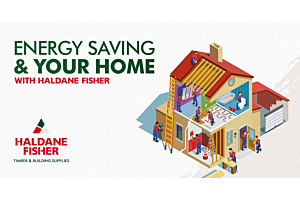Many lofts, especially in newer houses, come with loft ladders fitted already. However, it’s possible to access these spaces without loft ladders. Many older houses, or those refurbished on a tight budget, have a loft hatch and ladder or step ladder placed below.
These are the key benefits we advise of when considering loft ladder installation for your loft space or attic space.
Quick and easy
Even if you don’t access your loft often, if you don’t have an integrated loft ladder in the hatch, you’ll know that it’s a multi-part task when you do. First you have to fetch the ladder; if it’s outside or in an outdoor shed, this means a trip outside, possibly in bad weather. There then follows a trip through the house with the ladder or step ladder.
Once the ladder is upstairs, you’ll not only need to position it correctly, you will need someone to remain down with the ladder to hold it steady; Even with grips on the bottom, a standalone ladder or stepladder is prone to movement when its only support is the edge of your loft hatch.
A loft ladder is attached securely to your loft door; when accessing the loft, you simply open your loft door and draw it down. When you are finished, you simply push it back up again into its stored position before closing the loft door. Making the space quicker and easier to access can increase its capacity as a useable storage space, helping to keep the rest of your property decluttered.
Loft ladders are safer
As mentioned, a ladder or step ladder is not secured in any way and for safe operation, requires a second person of adequate strength to stand below and ensure it does not move around or fall down while you are climbing it.
If you live alone or do not have someone suitable to assist you, you are forced to risk climbing an unsecured ladder alone which is potentially dangerous. In many properties, the hatch to the loft space is above either a carpeted area or a tiled bathroom floor, neither of which are ideal surfaces for ladders and stepladders.
A secondary benefit of safe and easy access to your loft space is the fact it makes it safer and quicker for tradespeople or surveyors to access. If you have utilities in your attic space such as a boiler, a visiting professional can refuse to use your ladder or stepladder if they deem it unsafe to use.
Design choices
The modern market offers a huge range of choices for getting loft ladders fitted. Wood and aluminium are the most popular choices, as both materials are lightweight, robust and look good in the home.
If you’re a fan of natural-looking materials, there are wooden loft ladders. A wooden ladder can be varnished or painted to match or complement your interior decor. The Oman Termo PS Timber Loft Ladder is a lovely example of a wooden loft ladder. It comes with non-slip feet and can withstand weight up to 160kg.
Aluminium ladders remain a popular choice too. They can be less expensive than wooden ladders, and are exceptionally lightweight. Our Werner 2 Section Aluminium Loft Ladder is a very affordable option that’s high quality with lots of impressive features and can bear weight up to 150kg.





